1. 安装轻量级网络仿真工具Mininet
使用GitHub源码安装:
(1)首先从GitHub上获取mininet源码:
git clone https://github.com/mininet/mininet.git

(2)输入如下命令进行安装:
cd mininet/util
./install.sh


每次克隆到某个文件的时候都会遇到这个问题:

解决方法:用查找install.sh文件中的有git clone的部分,然后再替换成http
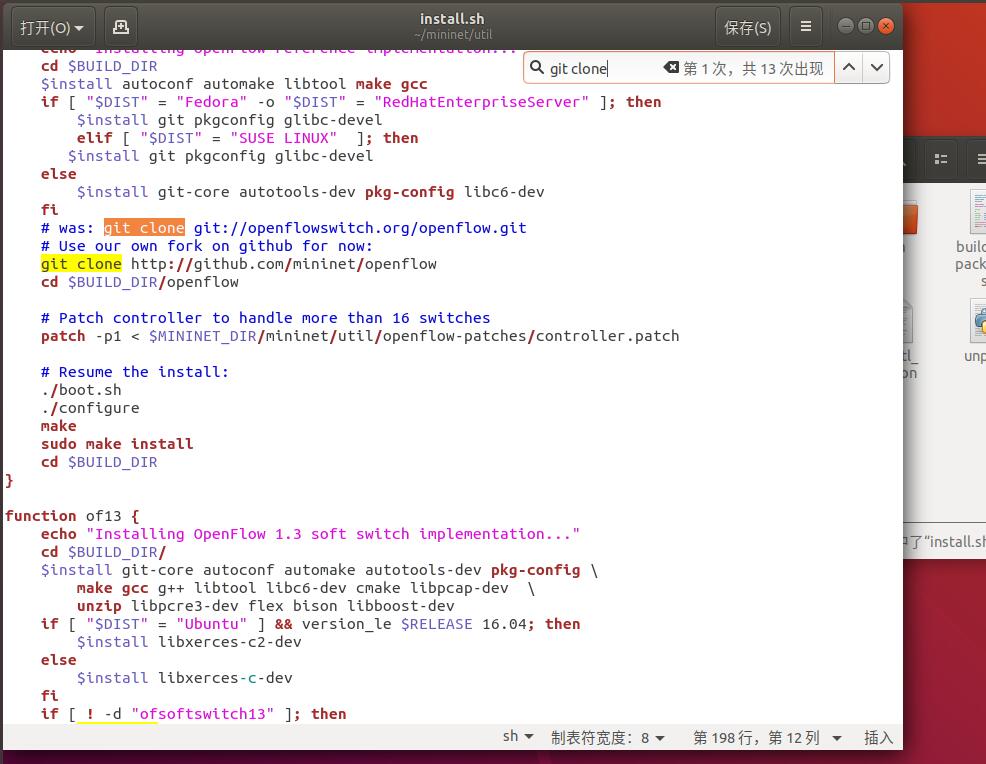
git clone git://github.com/mininet/openflow
替换成
git clone http://github.com/mininet/openflow
就解决了
等待一段时间后就安装成功啦
真希望我能够Enjoy Mininet哈哈哈哈

(3)安装完成后用mn --version命令查看所安装mininet的版本信息:
mn --version

2. 用字符命令搭建如下拓扑,要求写出命令
(1)

命令如下:
sudo mn --topo linear,3
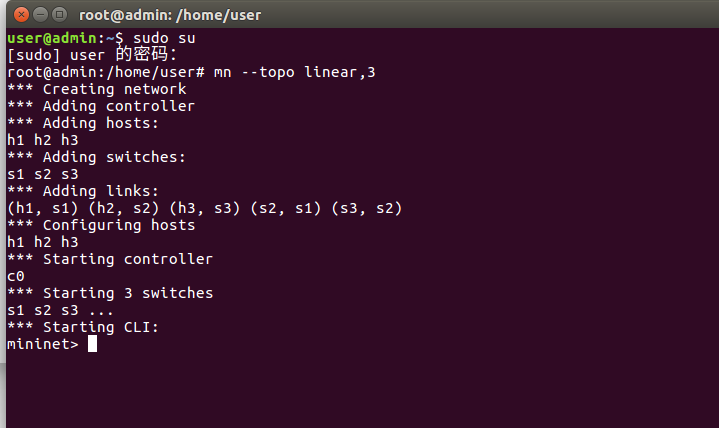
(2)
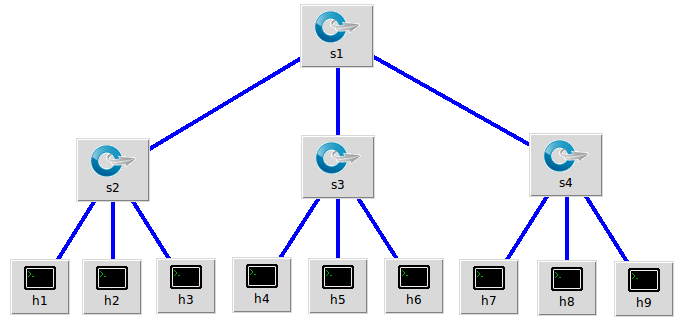
命令如下:
sudo mn --topo tree,fanout=3,depth=2

每次要新建拓扑时,需执行以下命令,防止上次操作对本次实验的影响。
sudo mn -c
3. 利用可视化工具搭建如下拓扑,并要求支持OpenFlow 1.0 1.1 1.2 1.3,设置h1(10.0.0.10)、h2(10.0.0.11)、h3(10.0.0.12),拓扑搭建完成后使用命令验证主机ip,查看拓扑端口连接情况。
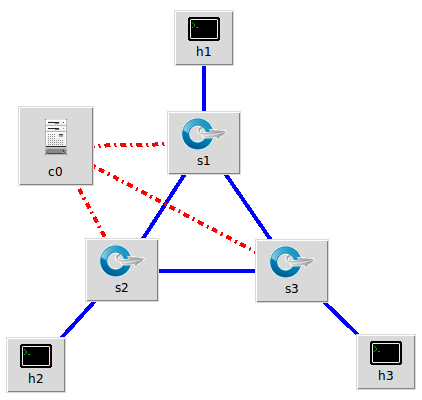
(1)在~/mininet/examples目录下打开终端,执行以下命令:
./miniedit.py
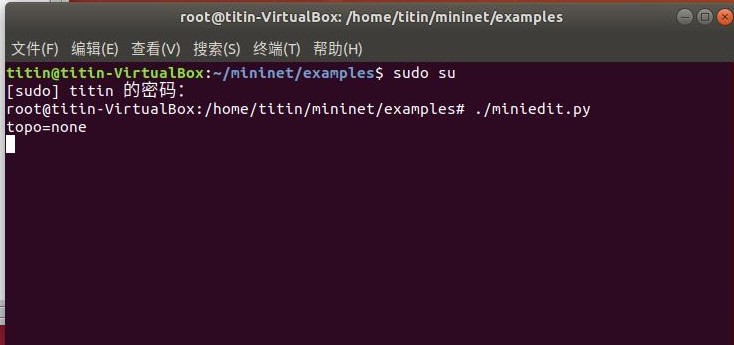
即可打开可视化控件,搭建拓扑:
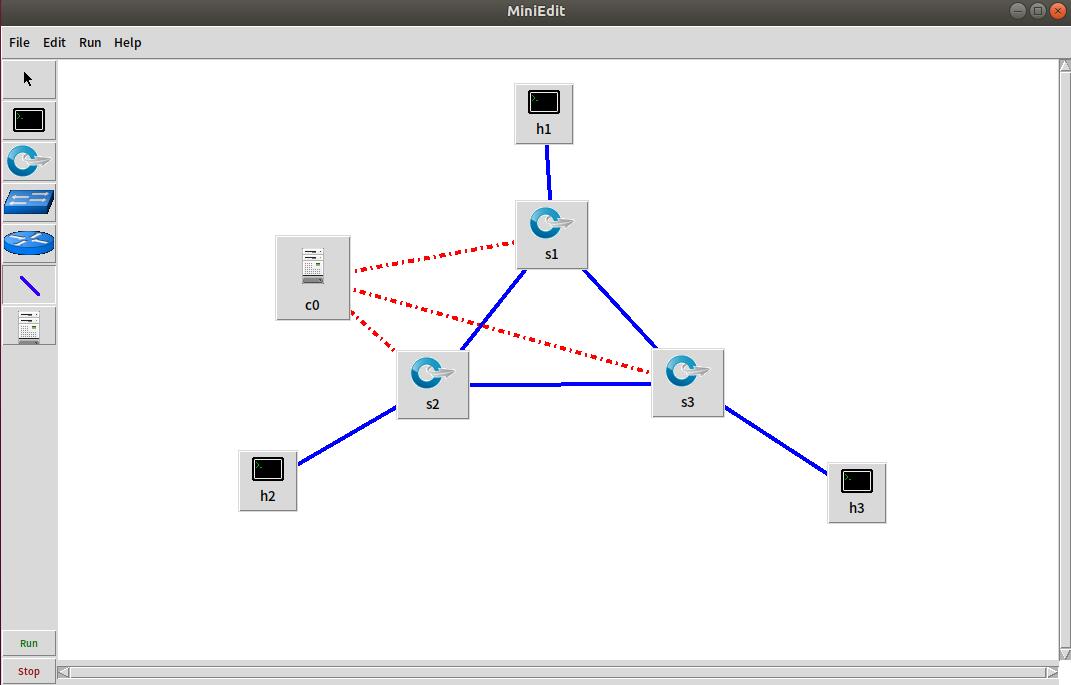
(2)设置h1(10.0.0.10)、h2(10.0.0.11)、h3(10.0.0.12),并在miniedit工具中开启CLI:

(3)点击Run按钮:

(4)通过net查看拓扑:
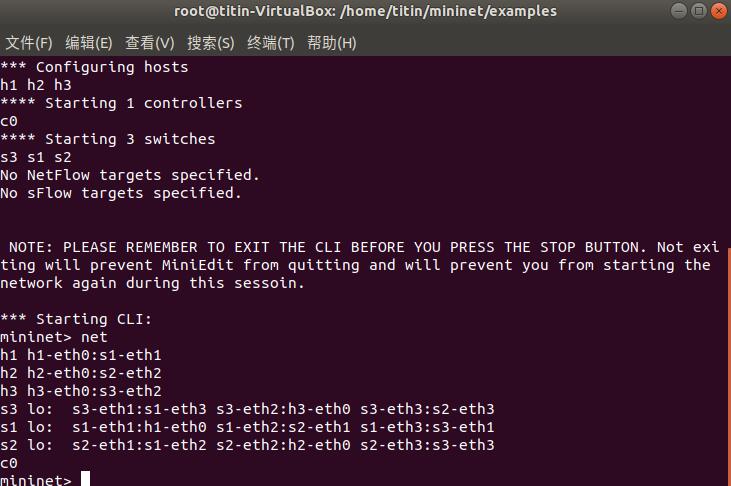
(5)使用xterm语句验证主机ip,查看拓扑端口连接情况:
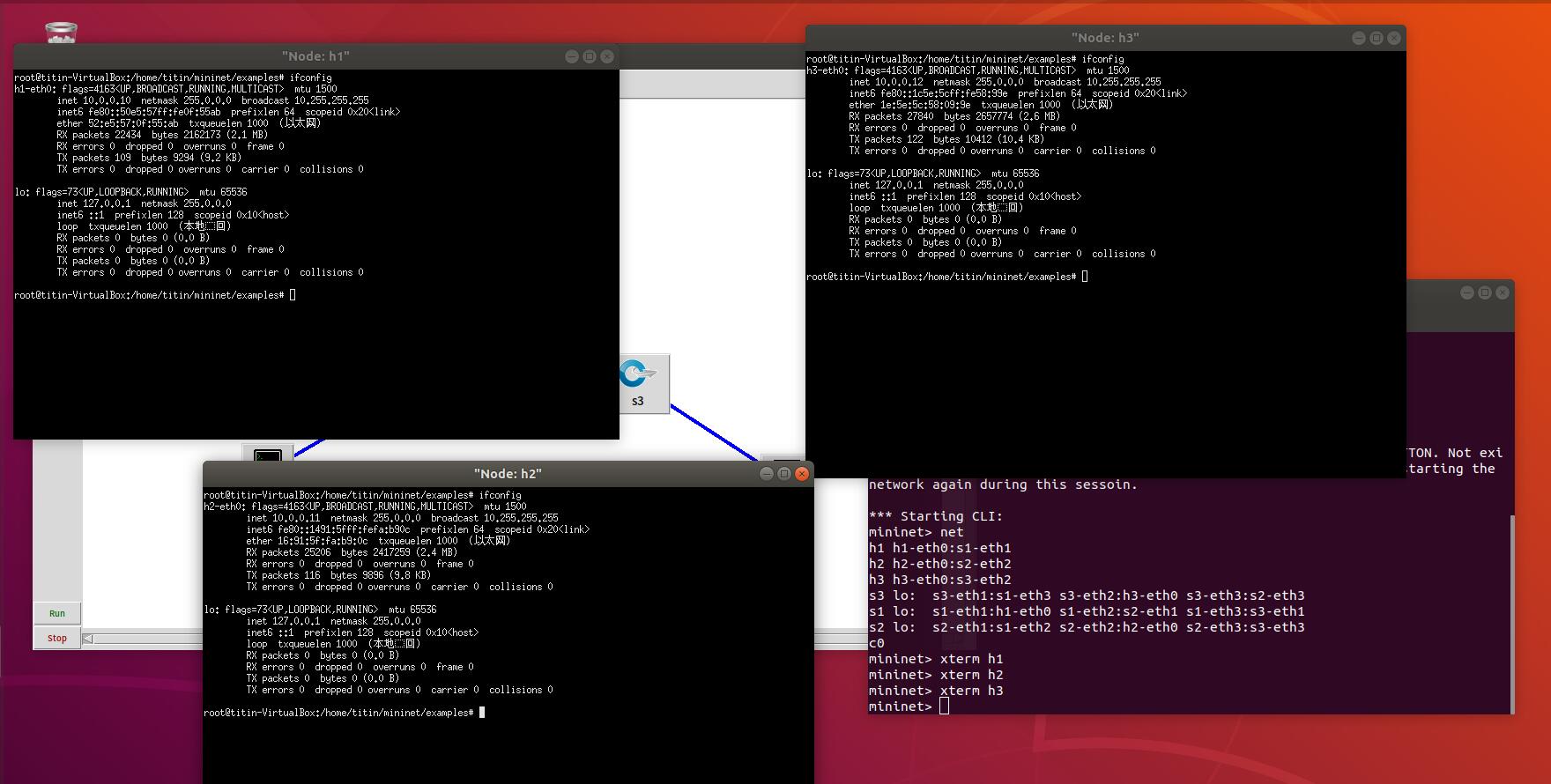
4. 利用Python脚本完成如下图所示的一个Fat-tree型的拓扑
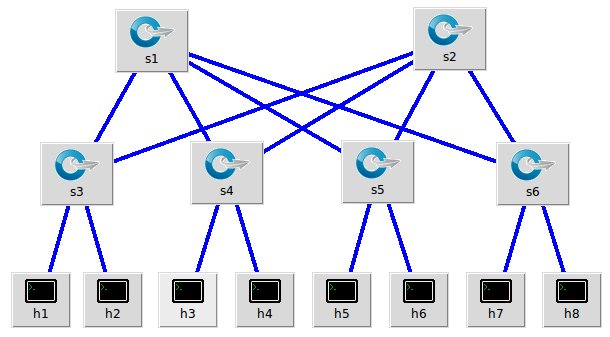
(1)python脚本代码:
#!/usr/bin/python
#创建网络拓扑
"""Custom topology example
Adding the 'topos' dict with a key/value pair to generate our newly defined
topology enables one to pass in '--topo=mytopo' from the command line.
"""
from mininet.topo import Topo
from mininet.net import Mininet
from mininet.node import RemoteController,CPULimitedHost
from mininet.link import TCLink
from mininet.util import dumpNodeConnections
class MyTopo( Topo ):
def __init__( self ):
# Initialize topology
Topo.__init__( self )
L1 = 2
L2 = L1 * 2
L3 = L2
c = []
a = []
e = []
# add core ovs
for i in range( L1 ):
sw = self.addSwitch( 's{}'.format( i + 1 ) )
c.append( sw )
# add aggregation ovs
for i in range( L2 ):
sw = self.addSwitch( 's{}'.format( L1 + i + 1 ) )
a.append( sw )
# add links between core and aggregation ovs
for i in range( L1 ):
sw1 = c[i]
for sw2 in a[i/2::L1/2]:
# self.addLink(sw2, sw1, bw=10, delay='5ms', loss=10, max_queue_size=1000, use_htb=True)
self.addLink( sw2, sw1 )
#add hosts and its links with aggregation ovs
count = 1
for sw1 in a:
for i in range(2):
host = self.addHost( 'h{}'.format( count ) )
self.addLink( sw1, host )
count += 1
topos = { 'mytopo': ( lambda: MyTopo() ) }
}
(2)用以下命令生成拓扑:
sudo mn --custom fattree.py --topo mytopo --switch ovsk,protocols=OpenFlow10
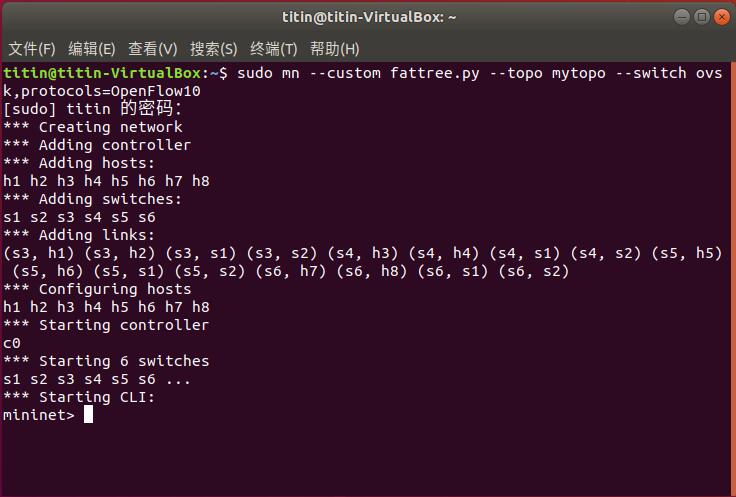
(3)使用net命令验证拓扑结构:
